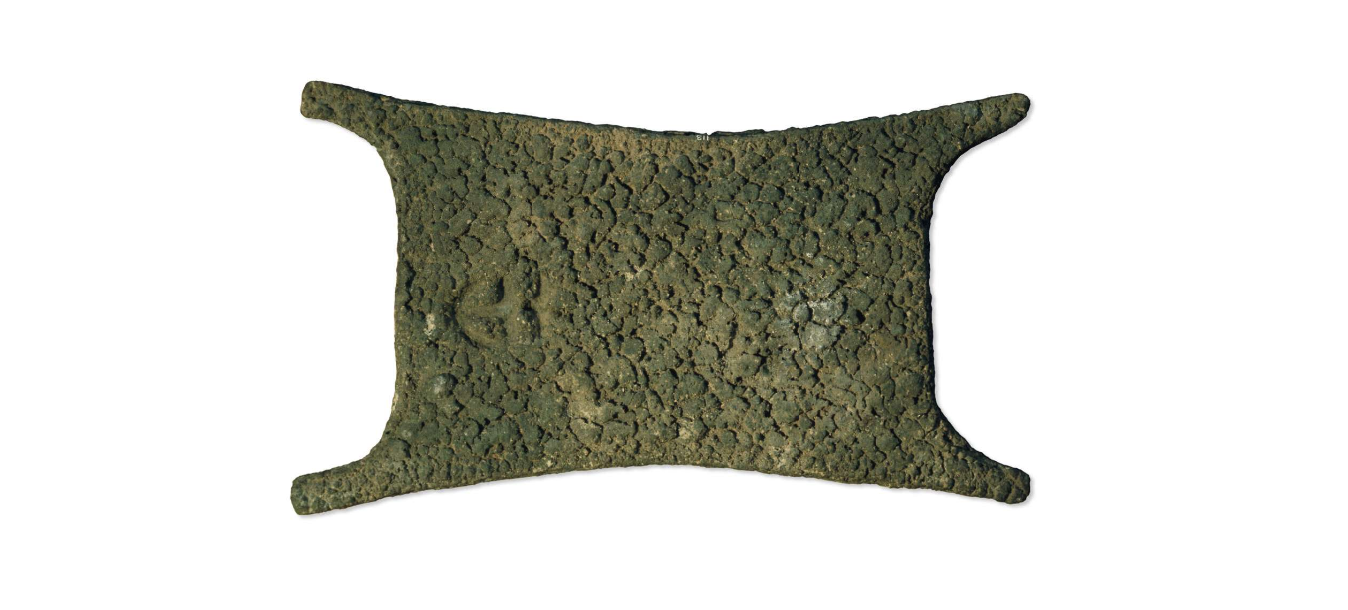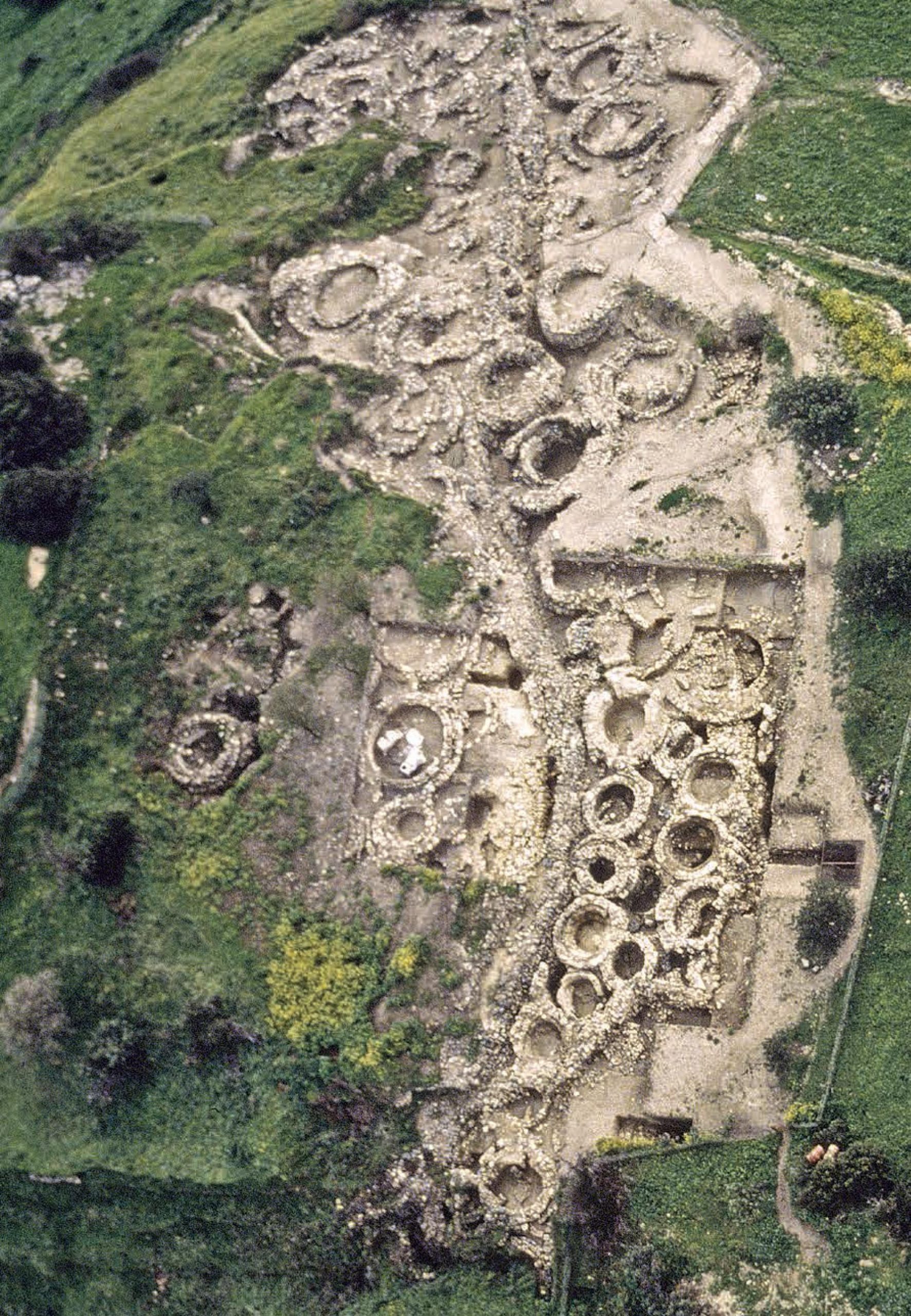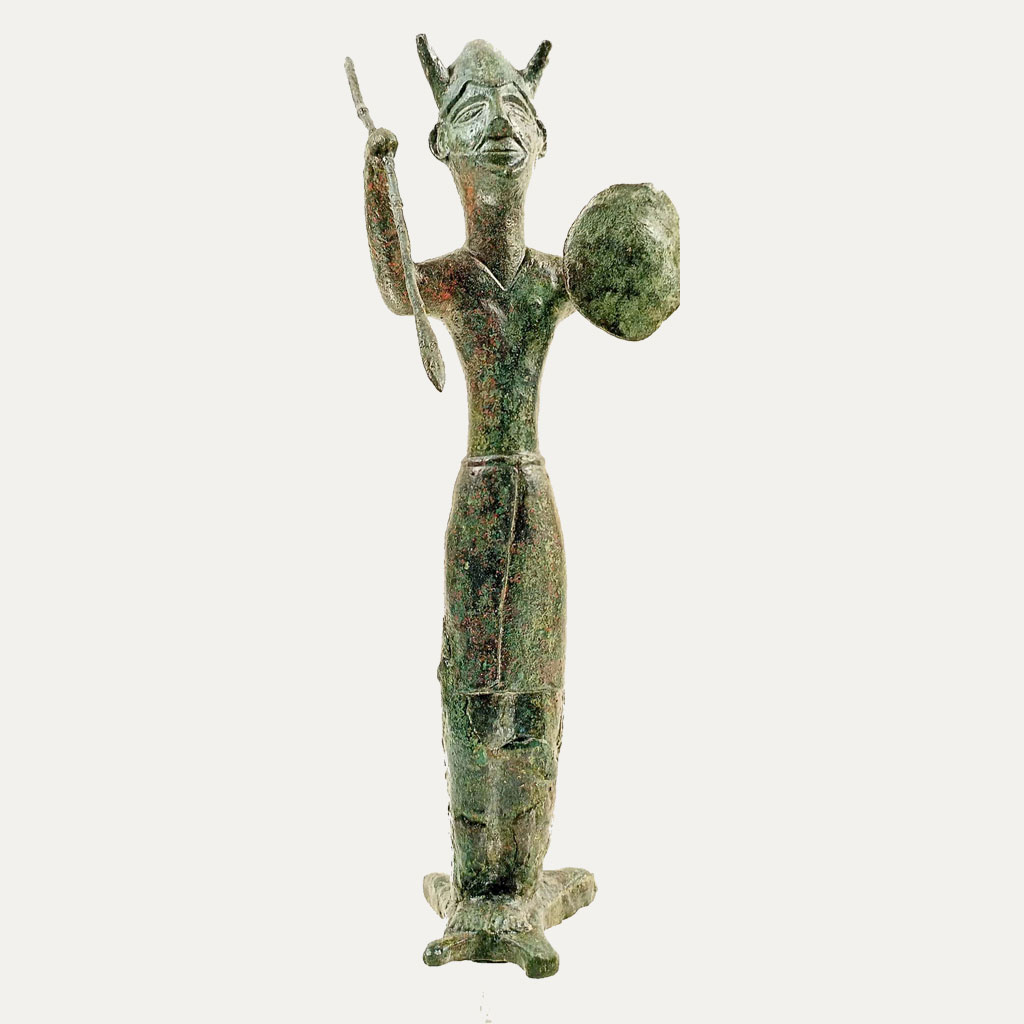Bronze Age Cyprus
CYPRIOT ART

The earliest traces of human presence in Cyprus date to the 10th millennium BC and come from the temporary habitation of hunter-gatherer bands in caves.
The first permanent Neolithic settlements appeared towards the end of the 8th millennium BC and were inhabited by small communities of farmers. The long Neolithic Age lasted until the early 4th millennium BC when a series of technological developments in the broader region of the Near East – and primarily the innovation of metallurgy – brought about important cultural and social changes which affected the entire Eastern Mediterranean basin.
CHALCOLITHIC PERIOD (4000/3900 – 2500/2400 BC)
The Chalcolithic period represents a transitional stage between the Neolithic and the Early Bronze Age and it is characterized by the appearance of the first metal objects in Cyprus, mainly small tools of hammered copper. It is still unclear whether copper working was a local invention or imported from the East, and there are no indications of systematic extraction of copper on Cyprus during this period. On the other hand, the evidence for maritime contacts is limited to small quantities of obsidian from Asia Minor.
The economy continued to be agricultural, although, gradually, traits such as the use of seals, the construction of special installations for worship, and increasing diversity in burial habits appeared, suggesting relatively complex forms of social organization. Of particular interest are the abstract female figurines, fashioned from picrolite, a local stone, which allude to fertility cults, continuing a long Neolithic tradition.
EARLY BRONZE AGE (2500/2400 – 2000 BC)

The transition from the Chalcolithic to the Early Bronze Age was marked by radical changes, most likely caused by population migrations from the coast of Asia Minor or by internal processes. Old settlements were abandoned, and new ones were founded close to water sources and tracts of arable land.
During this period, the inhabitants began to systematically exploit the rich copper ore deposits on the island, utilizing techniques for mining, smelting, and working that were possibly introduced from the Near East, where metallurgy was already advanced. By the end of the Early Bronze Age, the Cypriot bronze smiths had developed their own tradition, producing distinctive types of weapons and tools. Nonetheless, trade continued to be limited, and farming remained the basis of the economy.
MIDDLE BRONZE AGE (2000 – 1650 BC)
During the Middle Bronze Age, Cyprus developed more complex forms of social organization and took its place in an international network of exchange. The pronounced differences in wealth observed in burials point to more strictly defined social divisions. Many settlements were fortified, probably in response to domestic conflicts rather than external threats.
Religion acquired more complex forms of expression, with specific, established cult sites and elaborate ritual paraphernalia. The presence of permanent metallurgical installations confirms the increasing importance of copper for the island at this time, though there is sound evidence of trade with the Syro-Palestinian coast and Minoan Crete.
LATE BRONZE AGE (1650 – 1050 BC)
During the Late Bronze Age, Cyprus became a major centre of copper production, supplying the entire Eastern Mediterranean. Settlements with urban organization grew around the harbours where copper ingots and bronze artifacts were shipped out to the Aegean, the Middle East, and Egypt to be bartered or exchanged for various products and luxury goods. In the larger cities, buildings for administrative functions were erected.
At the same time, a system of writing was adopted from Crete (Cypro-Minoan script), which enabled the Cypriots to cope with the increased bureaucratic need for inventories and archives. The arts flourished, and the wealth that flowed into the island led to the emergence of social inequalities and hierarchy. In the late 13th c. BC, the upheavals sweeping the Eastern Mediterranean, sometimes attributed to the so-called “Sea Peoples,” also affected Cyprus. Several cities were destroyed, and waves of refugees arrived from the Aegean. Even so, the island quickly recovered from the dramatic disturbances and regained its role as an important mercantile centre.



